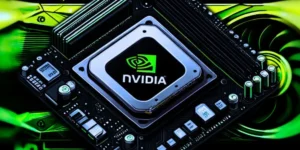Multi-core processors have become the standard in modern computing, transforming how data is processed and how efficiently systems perform. From everyday consumer devices to high-end enterprise servers, multi-core technology is critical in meeting the demands of multitasking, performance, and power efficiency. This article delves into multi-core processors, detailing their structure, advantages, limitations, and the wide range of use cases where they provide value.
Understanding Multi-Core Processors
A multi-core processor is a single computing component containing two or more independent processing units called cores. Each core can execute instructions and perform computations simultaneously, effectively increasing the amount of work a processor can handle at once.
Unlike traditional single-core processors, which execute one task at a time in a linear sequence, multi-core processors enable parallelism. This architecture allows different cores to handle multiple tasks or threads concurrently, significantly improving system responsiveness and workload distribution. By integrating various cores on a single chip, manufacturers can deliver higher performance without increasing clock speeds or power consumption proportionally.
Architecture and Functionality of Multi-Core CPUs
A multi-core processor’s core structure and intercommunication are critical to its performance. While each core operates independently, it shares access to the system’s memory, cache, and input/output resources, which must be efficiently managed to avoid bottlenecks.
Core-to-Core Communication and Cache Sharing
Cores in a multi-core processor communicate through a shared bus or interconnected network. This interconnect allows them to coordinate tasks, balance workloads, and access shared data. Many modern CPUs implement hierarchical caching, including dedicated L1 and L2 caches per core and a shared L3 cache across all cores. This arrangement reduces latency and speeds up data retrieval while ensuring shared resources are not a performance bottleneck.
Thread Management and Parallel Processing
Multi-core processors excel at handling multithreaded applications and software programs designed to divide tasks into smaller units called threads. The processor assigns these threads to different cores, enabling simultaneous execution. Operating systems and applications that support multithreading can fully leverage the power of multi-core processors to run tasks more efficiently and reduce idle time between computations.
Benefits of Multi-Core Processors
The shift to multi-core architecture has led to significant performance gains across computing devices. These benefits extend beyond raw speed, influencing energy consumption, scalability, and the ability to run complex applications.
Enhanced Multitasking and Responsiveness
One of the most noticeable advantages of multi-core processors is improved multitasking. Users can run multiple applications, such as web browsing, media playback, and software development tools, simultaneously without experiencing a slowdown. Each task can be assigned to a different core, minimizing conflicts and ensuring smoother performance.
Energy Efficiency and Thermal Management
Instead of relying on a single high-frequency core, multi-core processors distribute workloads across multiple lower-frequency cores. This distribution reduces the power demand of each core and generates less heat overall. As a result, multi-core processors deliver better energy efficiency and thermal performance, making them ideal for mobile devices, laptops, and data centers where power consumption and cooling are significant considerations.
Scalability for Demanding Applications
Multi-core processors are particularly well-suited for applications that demand high processing power, such as video rendering, 3D modeling, scientific simulations, and large-scale data analysis. These workloads can be divided across multiple cores, allowing the processor to complete them more quickly and efficiently. As software continues to evolve toward greater parallelism, multi-core CPUs offer a scalable path forward for handling increasingly complex tasks.
Challenges in Multi-Core Processor Implementation
Despite their benefits, multi-core processors are not without limitations. These challenges revolve around software compatibility, system complexity, and diminishing returns as core counts increase.
Software Optimization and Compatibility
Applications must be designed to effectively utilize multiple threads for multi-core processors to realize their full potential. Many older or simpler programs are single-threaded, meaning they cannot use multiple cores. In such cases, performance gains from multi-core architecture may be minimal. Ensuring that software is optimized for parallel execution remains a critical challenge for developers.
Inter-Core Communication and Bottlenecks
As the number of cores increases, coordinating communication and data access between them becomes more complex. Shared resources like memory buses and cache can become congestion points, leading to latency and performance degradation. Advanced interconnect designs and memory controllers are required to maintain efficient data flow and minimize these bottlenecks.
Diminishing Returns and System Overhead
Adding more cores does not always result in proportional performance improvements. There is a point of diminishing returns where the overhead of managing multiple cores outweighs the benefits, especially in systems with limited software support or poorly optimized applications. Additionally, increasing the number of cores can complicate system design and introduce new scheduling and load-balancing challenges.
Use Cases and Applications of Multi-Core Processors
Multi-core processors’ versatility has enabled their deployment in a wide array of computing environments, from personal devices to enterprise-grade systems. Their ability to balance performance and efficiency makes them ideal for diverse scenarios.
Consumer Electronics and Everyday Computing
In consumer devices like smartphones, tablets, and laptops, multi-core processors enhance user experience by delivering smoother multitasking and improved responsiveness. Whether switching between apps, streaming content, or gaming, multiple cores ensure that tasks are handled quickly and efficiently without compromising battery life.
Workstations and Creative Applications
Video editing, animation, and software development professionals benefit from multi-core processors capable of handling heavy computational workloads. Rendering a video or compiling large codebases can be time-consuming on single-core systems but is significantly accelerated when multiple cores work in tandem to complete the task.
Servers and Cloud Computing
In enterprise environments, multi-core processors are essential for powering servers and cloud infrastructure. They support many simultaneous users, run virtual machines, and manage distributed workloads efficiently. High core counts enable better performance under heavy demand, making them a foundational technology in modern data centers.
Scientific Research and High-Performance Computing
Multi-core processors are pivotal in high-performance computing (HPC) environments where massive datasets and complex simulations are standard. Research in fields like climate modeling, genomics, and physics relies on the parallel processing capabilities of multi-core systems to deliver accurate results in a reasonable timeframe.
Future Trends in Multi-Core Processing
The future of multi-core processors lies in architectural innovation, more innovative core management, and deeper integration with emerging technologies. As computing needs grow, so too will the sophistication of multi-core designs.
Heterogeneous Multi-Core Architectures
Heterogeneous processors, such as ARM’s big.LITTLE design combines high-performance cores with energy-efficient ones to optimize speed and power consumption. This approach is becoming increasingly popular in mobile and embedded systems, where performance needs vary dynamically. Future processors may feature a broader range of specialized cores for specific tasks, such as AI acceleration or security.
AI-Driven Core Scheduling
Artificial intelligence is being applied to optimize core utilization and task scheduling. AI algorithms can analyze workload patterns and allocate processing tasks more intelligently, maximizing performance while minimizing power use. This level of adaptive processing is expected to become more prevalent in both consumer and enterprise hardware.
Expansion into Quantum and Neuromorphic Computing
While still in early development, future advancements may combine traditional multi-core CPUs with quantum or neuromorphic processors to tackle highly specialized problems. These hybrid systems would rely on conventional cores for general tasks while leveraging new computing paradigms for targeted applications, expanding the role of multi-core designs in future architectures.
Conclusion
Multi-core processors represent a significant leap forward in computing technology, offering increased performance, better energy efficiency, and support for advanced multitasking. Their impact spans across personal devices, professional applications, and industrial-scale systems. While challenges like software optimization and inter-core communication remain, ongoing innovation in architecture and system design continues to push the boundaries of what multi-core processors can achieve. As computing needs evolve and grow more complex, the role of multi-core processors will only become more central in shaping efficient, powerful, and intelligent computing systems.









